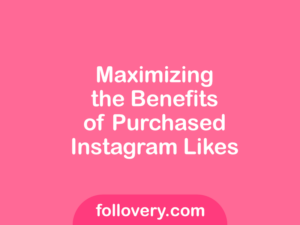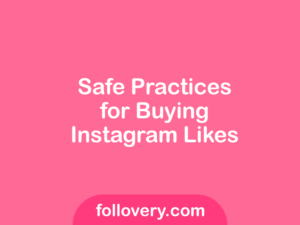Introduction:
Working with influencers can be an extremely effective way for a business or individual to increase their visibility and authority online. While identifying and contacting potential influencers may appear to be a daunting task, the process can be fairly streamlined – especially if you have a solid media kit prepared ahead of time.
A media kit is a collection of information (usually digital) that informs an influencer about you or your brand, including your story, key stats, demographics, visuals, and more. Not only will having a well-crafted media kit ready to go make reaching out to potential partners much easier, but it will also increase the likelihood of them saying yes when approached. This article will teach you how to make a great influencer media kit in six hours or less.
What Is an Influencer Media Kit?
An influencer media kit is a document that outlines an individual’s or organization’s credentials and contact information. It is typically used by bloggers, vloggers, Instagrammers, Tweeters, and other social media personalities to inform brands about their online presence and audience reach.
A good influencer media kit will include statistics about an individual’s social media following, page views, unique visitors, and other relevant data. It should also highlight any awards or press coverage the influencer has received.
What Should Be Included in an Influencer Media Kit?
As a social media influencer, you must have a solid online presence. This includes having an impressive social media following and maintaining a blog or website. Another important aspect of being an influencer has a strong media kit. Your media kit is your resume; it’s a way for brands and businesses to learn more about you and your work and decide if working with you is right for them. So, what should be included in an influencer media kit? Here are some key components:
Number of Followers on Social Media: An influencer media kit needs to include your social media reach, or in other words, the number of followers you have on each platform. Your potential clients will want to know how many people you can reach with your content.
Engagement Rate: In addition to your social media reach, your engagement rate is an important metric that should be included in your influencer media kit. Your engagement rate indicates how engaged your followers are with your content; the higher the engagement rate, the better.
Rates: As an influencer, you’ll likely be working with brands on sponsored posts, giveaways, and other collaborations. Include your rates for these services in your media kit, so potential clients know what to expect.
Media Samples: Last but not least, one of the essential components of an influencer media kit is media samples. These can include images, videos, blog posts – anything that showcases your work and demonstrates your capability. Including media samples in your kit will give potential clients a better idea of the kind of content you create and whether or not it aligns with their brand.
Audience Demographics: In addition to the above components, your media kit should include audience demographics. This includes information about your followers’ age, gender, location, and interests. Including this information will give potential clients a better understanding of the people seeing their content if they choose to work with you.
Sound Design: Good design is another crucial aspect of having a strong media kit. Your media kit should be visually appealing and easy to navigate; potential clients should be able to find the information they’re looking for without any hassle. Including images, graphics, and videos in your media kit will help make it more visually appealing, and using an easily-readable font will make it easier for people to digest the information.
Website Statistics: As a website owner, you should also include website statistics in your media kit. This has your website’s unique monthly visitors, page views, and bounce rate. Including this information will give potential clients an idea of the kind of traffic your website gets and whether or not many people would see their content if they chose to work with you.
Testimonials: Another critical aspect of having a strong media kit is including testimonials from previous clients. This helps show potential clients that you’re capable of providing high-quality content that meets their standards. Including one or two testimonials in your media kit is a great way to build trust and credibility with potential clients.
A Short Introduction About Yourself: As an influencer, one of the best ways to showcase your work and demonstrate your value to potential clients is by having a strong media kit. A media kit is a portfolio that outlines your credentials, experiences, and skills and showcases examples of your work. In this article, we’ll look at some critical components that every influencer media kit should include.
Your Contact Details include your name, email address, and website URL. You may also want to include links to your social media profiles if you have a solid social media presence. Including your contact information makes it easy for potential clients to get in touch with you and learn more about your work.
Collaboration Options: Some of the most shared content types that influencers include: blog posts, social media content, product reviews, sponsored posts, and video content. It’s also a good idea to list any platforms or networks that you’re active on, such as YouTube, Instagram, or Snapchat.
How Can You Create an Influencer Media Kit in 2022?
Step One: Define Your Objectives & Target Audience
Before you start putting your media kit together, taking a step back and thinking about what you’re trying to achieve with this document is essential. Are you looking to score some publicity for your business? Drive traffic to your website or blog? Attract new social media followers? Whatever your goal, it’s essential to keep that in mind as you put your media kit together so that every document element is working towards that overarching objective.
Similarly, who is your target audience? If you’re hoping to attract press coverage, then journalists and other media members will be your primary target. But if you’re more focused on growing your social media following, then influencers and different online personalities will be who you’re aiming for. Knowing who you want to reach will help determine what information should be included in your media kit.
Step Two: Assemble Your Basics
The next step is gathering all the essential information you’ll need for your media kit. This includes your name, contact details, website URL, and social media links. It would help if you also give a brief overview of who you are and what you do. This can be in the form of a one-sentence elevator pitch or a longer paragraph explaining your work in more detail. Once you have all this essential information assembled, you can start working on putting your media kit together.
Step Three: Create Your Visuals
As an influencer, one of your most valuable assets is your audience. Therefore, it’s essential to showcase your reach and influence in your media kit through visuals. Some of the most common visuals that are used in media kits include:
-Influencer Scorecards: These provide an overview of an influencer’s reach, engagement rate, and other vital metrics. They’re a great way to show potential clients the scope of your influence.
-Social Media Stats: If you have a solid social media presence, then including some visual statistics in your media kit is a good idea. This could be things like the total number of followers, average engagement rate, or even screenshots of any recent posts performing exceptionally well.
-Press Coverage: Have you been featured in any major publications? If so, then be sure to include those logos in your media kit as a way to show off your credibility and expertise.
Step Four: Add Any Other Relevant Information
Once you’ve assembled the basics and added some visuals to showcase your influence, you can start thinking about any other relevant information that might be helpful to include. This could be linked to any blog posts or articles you’ve written, examples of video content you’ve created, or even testimonies from past clients. Whatever information you think would be most beneficial for potential collaboration partners, make sure to include it in your media kit.
Step Five: Put Everything Together & Make It Easy to Navigate
The final step is to put all of the elements of your media kit together in a cohesive document. You may want to consider using a template or pre-designed layout so that everything looks professional and put together. Once everything is assembled, take some time to proofread the document and check for any typos or errors. Then save it as a PDF so that it’s easy for people to view and download electronically.
Conclusion:
As an influencer, a strong media kit is essential if you want to collaborate with brands and collaborate on projects. By following the steps in this article, you’ll be well on your way to putting together a media kit that will impress potential clients and help you score some fantastic opportunities.



